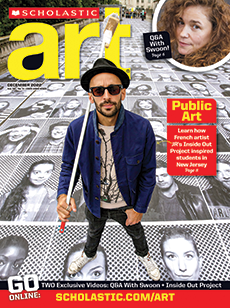From tropical forests near the Atlantic coast to the Sahara in the north, West Africa is a vast and diverse geographic region. It includes 16 countries and is a quickly growing economic powerhouse. It is home to many diverse cultures and talented people.
The three artists featured here are prime examples of this talent. Each one holds a deep connection to and respect for West Africa and its legacy, which they’ve shared with global audiences through their artwork. They convey memories of their homes, families, and ancestors to explore West Africa’s history and express ideas about what it means to be West African today.







